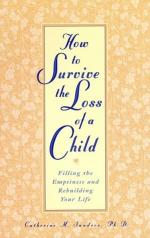|
This section contains 782 words (approx. 3 pages at 300 words per page) |

|
Death is the cessation of life. It involves a complete change in an organism and occurs on various levels, including somatic death, organ death, cellular death, and organelle death.
Somatic death refers to the death of a whole organism. It is typically preceded by the death of organs, cells, and cellular organelles. In animals, it is characterized by the cessation of life functions such as respiration, heartbeat, movement, and brain activity. However, it is difficult to determine the exact point of somatic death because it is similar to other conditions such as fainting or a coma.
A variety of changes occur after somatic death. One of the first changes is algor mortis. In this process the body cools, eventually reaching equilibrium with the surrounding temperature. Another change is rigor mortis in which the skeletal muscles stiffen and become rigid. It typically begins five to ten hours of death...
|
This section contains 782 words (approx. 3 pages at 300 words per page) |

|


